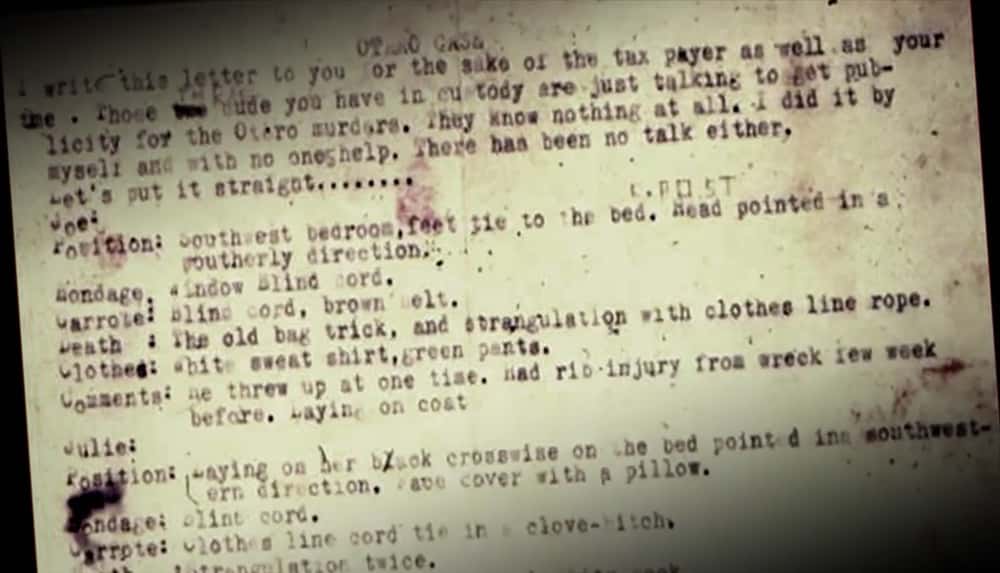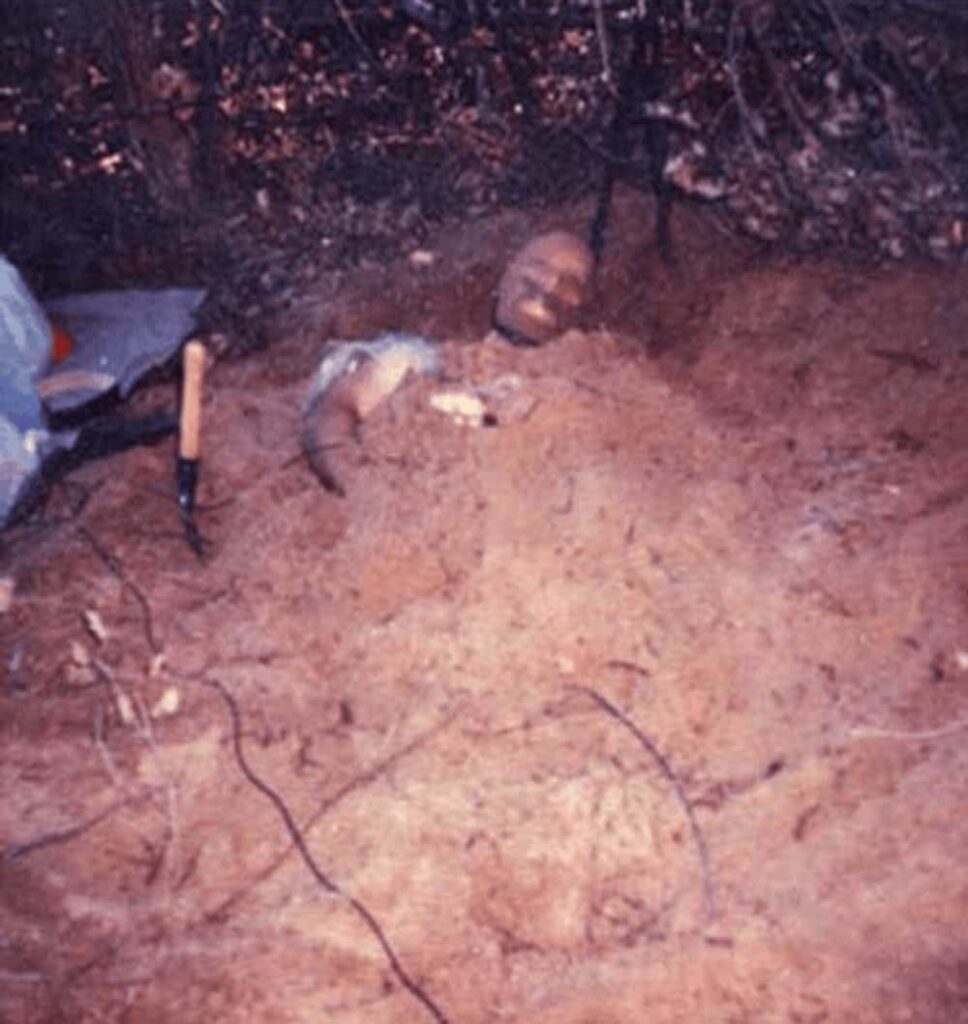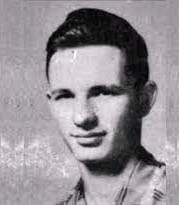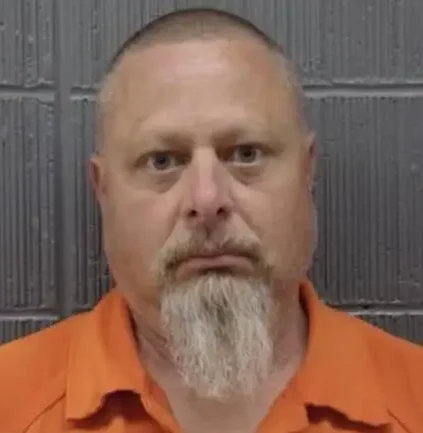
During the 70’s murders in Wichita, Kansas, were rare occurrence, but the events on January 15, 1974, changed that forever. A 38 year-old, Joseph Otero Sr., his wife Julia Maria “Julie”, 34, and two of their children were found tortured and killed in their home. The Otero killings in 1974 were a huge story. There was no forcible entry. The telephone line had been cut. Mrs. Otero was on the bed and Mr. Otero was on the floor. They had both been bound and strangled to death. Joseph Otero Jr., 9, was in the next room, on the floor, on his back. He was face-up, feet bound. His head was wrapped with a towel plastic, of some type. Further going through the house, police found a 11- year-old girl, Josephine, in the basement, hanging from a water pipe. In all of these homicides there was no sexual attack on any of the victims, but there was semen left at many of the scenes. There was a sexual gratification derived from strangulations. The perpetrator was a sadist. He loved watching people suffer when he strangled them and as well other family members had to listen to suffering. He had to control four people, had to tie them up and torture them for a long period of time, and that was broad daylight. Despite a thorough investigation into the Otero murders, the police had no leads and struggled to find a motive.
On April, 4, 1974, three months after the Otero killings, police were called to the home of 21-year-old Kathryn Bright, who lived just two miles away. Kathryn Bright and her brother had returned home and upon entering the residence were confronted by an individual that had been waiting in the house. He emerged from her bedroom closet with a gun, told them he was going to rob them. Struggle ensued between Kevin Bright and the individual. Kevin was bound to a chair. Kevin fought free, grappled with the man, but the man shot him in the side of the head, knocking him unconscious. Although the killer thought Kevin was dead, Kevin woke and heard his sister being strangled. He went to her aid and again he was shot in the face. Kevin managed to stumble at the front door where a passerby found him and called emergency. Kathryn Bright had been stabbed three times in the abdomen. Despite police and medical crews arriving at the scene, she died later in hospital. Kevin Bright survived the ordeal, but police felt the extent of his injuries made his description of the killer unreliable.
In the months that followed, police received their first breakthrough in the Otero case. Three men, allegedly, openly confessed to the killings and it wasn’t long before the news made the front pages. The police department made some arrests in December of 1974. It was during that period of time that the news media picked up on it, and community knew that some people were in custody and the perpetrator contacted them.
On October 22, 1974, a man called the Wichita Eagle newspaper and directed them to the public library, where they would find a letter hidden in an engineering book. The police were immediately notified and the letter was retrieved by lead detective. They determined it was the perpetrator. The letter said, excerpt 1: “I write this letter to you for the sake of the tax payer as well as your time. Those three dude you have in custody are just talking to get publicity for the Otero murders. They know nothing at all. I did it by myself and with no ones help. There has been no talk either. Let’s put this straight….”
“The writer of the letter would have had to be inside the house when the crime was committed or participated in the crime,” said Floyd Hannon, then chief of police.
Excerpt 2: “I’m sorry this happen to society. They are the ones who suffer the most. It hard to control myself. You probably call me ‘psychotic with sexual perversion hang-up.’ When this monster enter my brain I will never know. But, it here to stay. How does one cure himself? If you ask for help, that you have killed four people they will laugh or hit the panic button and call the cops.”
“I can’t stop it so the monster goes on, and hurt me as well as society. Society can be thankful that there are ways for people like me to relieve myself at time by day dreams of some victims being torture and being mine. It a big compicated game my friend of the monster play putting victims number down, follow them, checking up on them waiting in the dark, waiting, waiting… the pressure is great and sometimes he run the game to his liking. Maybe you can stop him. I can’t. He has aready chosen his next victim or victims. I don’t who they are yet. The next day after I read the paper, I will know, but it to late. Good luck hunting.
“YOURS, TRULY GUILTILY”
The letter was not signed, but there was a postscript:
“P.S. Since sex criminals do not change their M.O. or by nature cannot do so, I will not change mine. The code words for me will be… Bind them, toture them, kill them, B.T.K., you see he at it again. They will be on the next victim.”
Misspellings are BTK’s.
He described in detail Otero crime scene. He photographed the scene and that’s how he kept all these details straight. The letter filled with grammatical errors was from the killer himself.

One of the most unusual aspects about the BTK case is that there were communications with the police. It is really an extremely rare event. In a desperate attempt to find the killer, police stepped up their investigation recruiting more officers to the case, but the trail of BTK mysteriously went cold. It would be another three years before he was heard from again.
On March 17, 1977, Shirley Ruth Relford was a 25 year-old, single mother, living alone with her three children. The oldest child was a 8-year-old boy. The second child was a 6-year-old boy, and a 4-year-old girl. He appeared at the door and gained entry into that residence. Once he was in the house he pulled a handgun, similar to the Kathryn Bright, and told them he was going to rob them. He put the children in a bathroom. They were locked there and couldn’t get out. The oldest child, 8, heard his mother being murdered. There was a very small window in the bathroom. That window children used to finally get out of the bathroom. When the police arrived, Shirley Vian had been bound and strangled. She was found on the bed and there was semen left at the scene. She was not raped.
Investigators’ theory was that he was strangling them and as they were dying, he was probably masturbating. That was something that aroused him. If the children had not escaped or something interrupted him, investigators believed they would’ve had dead children. They worked with children to get a description from them. They had a child psychologist who worked with the oldest child. The perpetrator was a white male. The boy said that he was about mommy’s age, which would have put him somewhere in their 30s, early 30s, somewhere in that category. He had a black bag. Investigators theorized that he brought the tape with him, ropes. He had a gun. They were baffled by a three-year-old gap between killings.
Today we know that serial murderers usually kill after something has gone wrong in their life. They have some kind of crisis.
Police Chief asked FBI whether to inform public that it was a serial murderer. He got many different advice from FBI, behavioral science unit. They decided not to give him credit in hopes that he would communicate with them. They were wrong.
His call was recorded. Police just started using a new system, which was brand new then. The caller did not know that the dispatcher knew where the call was coming from. A police officer was there within 2 minutes, but the caller the BTK was gone. They dispatched two officers at that address. They found the back window was broken and the telephone line cut. Nancy Fox was a 25-year old part-time secretary. She was found on the bed, facedown. Her panties had been pulled down, between her buttocks and her knees. There was semen left at the scene in a negligee, laying by her head.
Police turned all their attention to the phone call and searched for witnesses to give them a detailed description of the murderer. A witness, who wanted to make a call, saw a white male, approximately 5.8 to 5.9., light hair, a very generic description. The police were unable to release a detailed sketch.
In January, 1978, a poem from BTK was sent to the Wichita Eagle, which was a parody on a nursery rhyme, related to the murder of Shirley Relford (Vian). Journalist, who opened it, didn’t recognize and it ended up on wrong desk.
His poem wasn’t published and he sent “How many more people do I have to kill, before I get some publicity?”
February 9, 1978, BTK sent a letter to KAKE-TV claiming responsibility for seven murders and threatened to kill again. One of the four pages in the letter was the poem “Oh! Death to Nancy.”. Another page had a drawing of how Nancy Fox’s body was arranged. He admitted to wanting to kill Shirley Vian’s children, but he was interrupted. The other two pages were the letter, again replete with misspellings. In it, BTK describes his erotic feelings at the death of young Josephine Otero.
Wichita was plunged into a state of panic. People were encouraged to call police if they feel anything unusual. Once again BTK disappeared.
On April 28, 1979, Anna Williams was a 63-year-old woman who had a schedule. She had a dance class, but instead of going home, she stayed with her daughter. In the morning, she went home and discovered there had been someone who had broken into her house. He had spent apparently considerable time in her house. The telephone line had been cut. There was forced entry through one of the windows. It was just a typical residence burglary as far as anybody knew, until several months later when a letter was received. There were some items in the envelope of hers (scarf), as well as a letter, and a drawing. It was a quite horrifying drawing. BTK sent her the poem “Oh Anna, Why Didn’t You Appear.” KAKE-TV reportedly received a similar package. Anna was so upset that she left the state.
The police searched for a link between the victims. Investigators consulted psychologists, psychiatrists and nothing fitted. Victims’ age range was from 9 to 63-year-old. Desperate for a break in the case the police took the unprecedented step of releasing the Nancy Fox phone call to the public, which they had spent the past two years trying to enhance, using state-of-the-art equipment. At the time experts managed to clear up some of the background noise, in the aim that someone would recognize the voice of BTK. Despite realizing the call, no one came forward.
Three years after attempted murder of Anna Williams, the police didn’t have any leads and FBI became fully involved.
In 1982 the Federal government started funding a program through the FBI, called VICAP, Violent criminal apprehension project. In 1984 money was appropriated for the Wichita Police Department to work on catching that violent criminal. With the federal money and city money they devoted, eventually, up to eight officers to work on this case full time, from the summer of 1984 until the summer of 1986. Ghostbusters was the BTK task force and it was a group of individuals that worked together on the BTK case.
The first DNA testing done in the United States was in the investigation for the BTK strangler.
They discovered that he sent copies of the letters, not originals. Apparently the copy machines of that era printed an image a little bit bigger than what it saw, so that made it impossible to positively identify a typewriter. With the help of Xerox Corporation in Rochester, New York they were able to identify the brand and make of toner and the brand, and even the length of the roll of the paper that one of the copies was made from. So they were able to pin it down to one particular copy machine on the campus of Wichita State University, which was a public access machine open to any student or employee, or a person who wandered in there. So at that time it led to some speculation that perhaps he was a student. The second copy machine was traced using the same methods to the second floor of the Wichita Public Library, which was just within a few feet of where the original letter was found in an engineering book. After two years of intensive investigation and thousands of man-hours, the Ghostbusters task force came up with nothing and shut down. Just about a month after the investigation had concluded, there was one last murder investigation that the Ghostbusters met to discuss. It was a murder of Vicki Lynn Cook Wegerle. They unanimously concluded that BTK did not kill her. It would take about 18 years before they found that they were wrong.
Wichita’s most notorious serial killer had not been heard from in over 25 years, but in 2004 all that changed. On March 19, 2004, a letter was sent to the Wichita Eagle newspaper. The letter contained a single sheet of paper. On that sheet of paper were three photographs. In one driving license. The photographs appeared to be a woman with her hands tied behind her back, who appeared to be dead, lying on the floor. Driver’s license belonged to Vicki Lynn Cook Wegerle. She was murdered in her home in 1986. The case had been unsolved for nearly 20 years. The murderer came in the back door. It was on a very busy street. A 28-year-old was home alone. Her child was at school. Her husband was at work. The perpetrator bound and strangled her, took her car, drove a short distance and left. Husband found her and their toddler on the floor in another bedroom. Husband tried to save her and cut her loose, called ambulance. Investigators didn’t have a crime scene, but the husband did what was right to do. Her husband became number one suspect. Investigators asked the husband’s sister to talk to a toddler, and the boy said that ‘daddy didn’t hurt mommy’. Bill Wegerle failed polygraph or, so called lie detector. That was example which has been using often against polygraph. After a thorough investigation, Bill Wegerle was cleared. He was living under suspicion for so many years. The only thing missing was her driving license. In 2004, BTK sent a copy.
An estimated 3000 Wichita men, between the ages of 55-65, had been swabbed in the largest DNA sweep in American history.
In his letters to police, Rader asked if his writings, if put on a floppy disk, could be traced or not. He wrote ‘be honest’. The police answered his question in a newspaper ad posted in The Wichita Eagle, saying it would be safe to use the disk. On February 16, 2005, Rader sent a purple 1.44-Megabyte Memorex floppy disk to Fox affiliate KSAS-TV in Wichita. Also enclosed were a letter, a gold-colored necklace with a large medallion, and a photocopy of the cover of Rules of Prey, a 1989 novel by John Sandford about a serial killer. Police found metadata embedded in a deleted Microsoft Word document that was, unknown to Rader, still stored on the floppy disk. The metadata contained the words “Christ Lutheran Church”, and the document was marked as last modified by “Dennis”. An Internet search determined that a “Dennis Rader” was president of the church council. When investigators drove by Rader’s house, a black Jeep Cherokee—the type of vehicle seen in the Home Depot surveillance footage – was parked outside. This was strong circumstantial evidence against Rader, but they needed more direct evidence to detain him.
Police obtained a warrant to test a pap smear taken from Rader’s daughter at the Kansas State University medical clinic. DNA tests showed a “familial match” between the pap smear and the sample from Wegerle’s fingernails; this indicated that the killer was closely related to Rader’s daughter and, combined with the other evidence, was enough for police to arrest Rader.
Rader was arrested while driving near his home in Park City shortly after noon on February 25, 2005. An officer asked, “Mr. Rader, do you know why you’re going downtown?” Rader replied, “Oh, I have suspicions why.” Wichita Police, the Kansas Bureau of Investigation, the FBI, and ATF agents searched Rader’s home and vehicle, seizing evidence including computer equipment, a pair of black pantyhose retrieved from a shed, and a cylindrical container. The church he attended, his office at City Hall, and the main branch of the Park City library were also searched.
When he was arrested, he asked them: “Why did you lie to me?” Later he said the he had thought they wanted him to ‘finish the story’.

Marine Hedge, aged 53, was found on May 5, 1985, in Wichita. Rader killed her on April 27 and took her dead body to Christ Lutheran Church, where he was the president of the church council. There, he photographed her body in various bondage positions. Rader had previously stored black plastic sheets and other materials at the church in preparation for the murder and then, later, dumped the body in a remote ditch. Two women Rader stalked in the 1980s and one whom he stalked in the mid-1990s, filed restraining orders against him. One of them also changed her address to avoid him.

The eldest of four sons, Dennis Lynn Rader was born in Pittsburg, Kansas, on March 9, 1945 to bookkeeper Dorothea Mae Rader and Kansas Gas Service worker, William Elvin Rader. Rader grew up in Wichita. Both parents worked long hours and paid little attention to their children at home. As an adult Rader recalled feeling ignored by his mother. His father was his hero.
From a young age, Rader harbored sadistic sexual fantasies about torturing “trapped and helpless” women. He tortured, killed and hung small animals. Rader acted out sexual fetishes for voyeurism, autoerotic asphyxiation, and cross-dressing. He often spied on female neighbors while dressed in women’s clothing, including women’s underwear that he had stolen, and masturbated with ropes or other bindings around his arms and neck.

Years later, during his “cooling off” periods between murders, Rader would take pictures of himself wearing women’s clothes and a female mask while bound. He later admitted that he was pretending to be his victims as part of a sexual fantasy.



However, Rader kept his sexual proclivities well hidden, and was widely regarded in his community as “normal, polite, and well mannered”. He attended Butler County Community College in El Dorado, earning an associate degree in Electronics Engineering Technology in 1973. He then enrolled at Wichita State University and graduated in 1979 with a Bachelor of Science degree, majoring in Administration of Justice.
Rader married Paula Dietz in 1971. They had two children, Kerri and Brian.

Rader initially worked as an assembler for the Coleman Company, an outdoor supply company. He then worked at the Wichita-based office of ADT Security Services from 1974 to 1988, where he installed security alarms. In many cases, his clients were concerned homeowners seeking security from his own BTK killings. Rader was a census field operations supervisor for the Wichita area in 1989 for the 1990 federal census.
In this position, neighbors recalled him as being sometimes overzealous and extremely strict, as well as taking special pleasure in bullying and harassing single women. One neighbor complained that Rader killed her dog for no reason. Rader was a member of Christ Lutheran Church in Wichita, and at one point was elected president of the church council. He was also a Cub Scout leader.
On July 26, 2005, after Rader’s arrest, his wife was granted an emergency divorce, waiving the normal 60-day waiting period. In an interview with ABC News in 2019, Rader’s daughter, Kerri, said she writes to her father and has now forgiven him, but still struggles to reconcile her “normal” childhood with the knowledge that she was raised by the BTK killer. However, at the 2024 Crime Con in Nashville, Kerri revealed excerpts from her father’s journal had revealed he’d sexually abused her as a young girl.

On February 28, 2005, Rader was charged with 10 counts of first degree murder. Rader had confessed to other murders in addition to those with which he had been connected. He described the murders in detail and made no apologies.
He was sentenced to 10 consecutive life sentences, with a minimum of 175 years.
Rader family lived in a small house, but he kept a photo album and things related to murders in the house.






https://www.crimelibrary.org/serial_killers/unsolved/btk/letters.html

